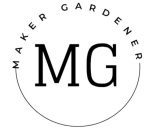This is a blog post on eco fabric printing with dyers chamomile. Eco printing also known as natural printing as it says uses natural dyes and naturally available items. They are like flowers and leaves that are chosen to produce patterns. As a result, they produce one-off patterns and look completely organic. This technique has gain popularity in recent years. There is now a big trend in using natural items. In this post, I am using dyers chamomile which produces yellow. Here is my blog post on how to fabric dye out of dyers chamomile. It also prints fabric just using dyers Chamomile flowers. This is because it’s the flowers that yield the colours.

Eco fabric printing with dyers chamomile
I would normally just dye the fabric with dyers Chamomile before printing as it means I could add more colours or manipulate with different mordants. To eco print directly from fresh flowers means it wouldn’t print flowers as such to the bulky shape of dyers Chamomile flowers. The steams and the leaves don’t yield any colour.

I have tried natural/ eco printing with different types of fabrics, leaves and mordants with great success. Fresh flowers tend to yield stronger colours than dried ones. It also requires some help with alum to obtain bright yellow and some extra dip to obtain a strong yellow colour. Then it is ready to print. Sumac, oxalis, Hypericum perforatum (St John’s wort) flowers, stem and leaves go and Cotinus compliment with dyers Chamomile. I also use an iron blanket that will darken the final outcome of the print. Iron does help to make the dye colours last longer as well.
I also tend to use habotai silk, crepe silk or silk noil instead of cotton or linen. As the cellulose fabrics tend to be subtle like pale and washed out. Rather than well-defined prints. There are many ways to eco print on fabrics if one set method doesn’t turn up well just redye the fabric and try to print again. The technique used does affect the outcome as well. So perhaps tweaking the technique might help.
Thank you for reading and dropping by. Here is more blog posts on eco printing using logwood, madder and cochineal.



